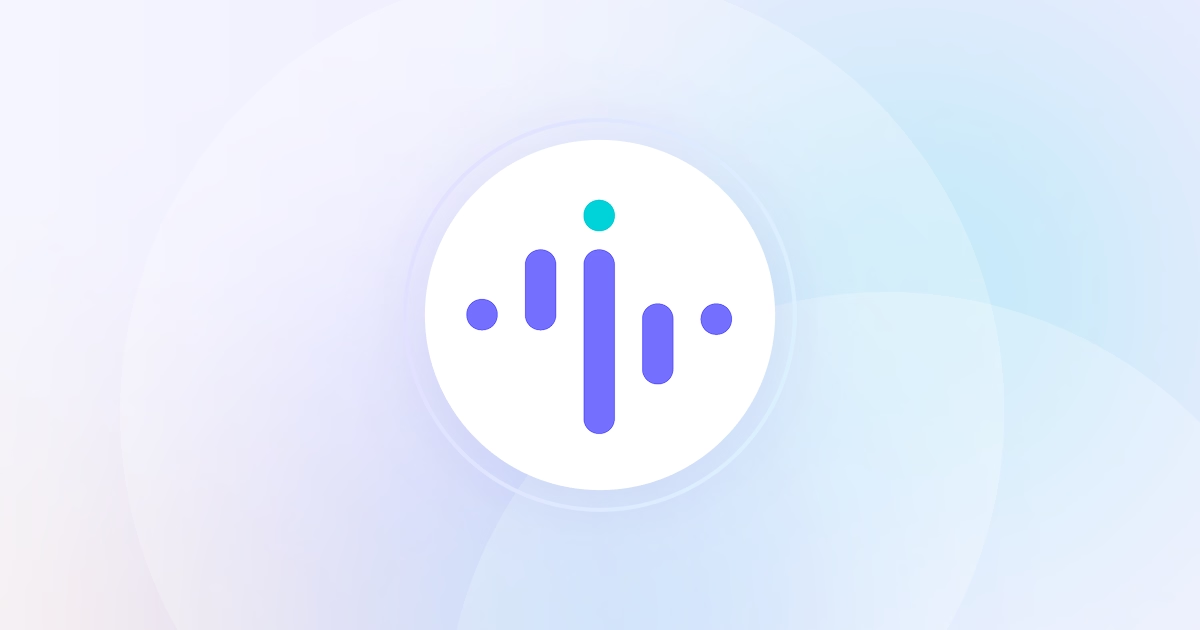Why You Should Always Tell Your Employees They're Being Monitored

.png)

In this article, we’re going to discuss:
- Why introducing monitoring software without context can damage trust, and how to avoid common rollout mistakes.
- How to align monitoring software with team-wide goals like focus, fairness, and workload visibility.
- Tactics for introducing Insightful in a transparent, empowering way that supports growth.
- What business benefits you unlock when employee monitoring is handled openly and collaboratively.
A new team lead rolls out monitoring software without telling the team. Within a week, trust frays, productivity drops, and conversations turn cautious.
It’s a familiar misstep: the tool was meant to improve focus, but the rollout felt like punishment.
The best PC monitoring software can absolutely make work better. But only if employees understand how it works, why it’s used, and what it protects. Without transparency, even the best-intentioned tools can breed resistance and disengagement.
This article helps you rethink how to introduce productivity monitoring, so it builds trust instead of breaking it.
Why Rushing Into Employee Monitoring Backfires
When monitoring software gets introduced without explanation, it rarely lands as a productivity boost. More often, it’s seen as a red flag, especially by employees who weren’t underperforming to begin with.
This isn’t just about perception. Research from the Journal of Business Ethics found that employees are up to 70% more accepting of monitoring when they’re informed ahead of time. However, many companies still launch tools like surveillance systems: silent, sudden, and top-down.
Is employee monitoring legal? Different countries and regions have different regulations on monitoring, so if not implemented thoughtfully, it can make employees feel blindsided and have potentially serious legal repercussions. Without ethical monitoring, engagement slips, and leaders miss the real goal of monitoring tools: understanding behavior.
Poorly thought-out rollouts hit hardest in hybrid and remote environments, where visibility is already a challenge. Without clear communication, monitoring feels less like a management upgrade and more like a lack of trust.
The actual problem is skipping the conversation that makes monitoring make sense.
How to Anchor Monitoring in Shared Goals
Before a single report is generated, monitoring should have a purpose that everyone understands and that benefits everyone.
Instead of introducing tracking as a response to underperformance, position it as a way to optimize your business processes. Use it to fix fragmented workflows, unclear expectations, or time lost in unnecessary meetings. Monitoring, when done transparently, becomes a shared diagnostic tool. It helps leaders rebalance workloads and gives teams proof of what’s slowing them down.
For example, Insightful’s monitoring software offers a productivity labeling system that allows managers to define which apps and websites are “productive,” “unproductive,” or “neutral” based on the role. This nuance helps teams feel seen for the work they actually do, not punished for spending time in tools essential to their job.
Framing is everything. If employees see monitoring as a tool for fairness and focus, they’re far more likely to adopt it.
1. Involve Employees in the Setup Process
Most resistance to monitoring stems from surprise. When people don’t know what’s being tracked with desktop surveillance software, it creates anxiety, even among top performers. Involving employees early changes that dynamic.
Invite teams to weigh in before rollout. Ask how they define productivity in their roles. Let them test the platform from the employee side. This builds trust and surfaces blind spots you may not have seen from a management perspective.
For instance, an engineer might log hours of "idle" time while thinking through complex code. Without their input, that could be misread as low output. With it, you can set accurate benchmarks.
Insightful supports this transparency by letting employees access their own dashboards. They can see how their time is tracked, labeled, and reported, turning data from a one-sided metric into a two-way mirror.
The message shifts from “We’re watching you” to “You have visibility too.”
2. Use Data for Growth, Not Discipline
Once monitoring is live, the real work begins: using the insights in a way that strengthens team relationships.
Rather than policing behaviors, use trends to ask better questions. Why is one department consistently overloaded? Why does focus time drop after lunch? Why are some employees thriving while others are disengaged?
These are coaching questions, not compliance checks.
Insightful helps frame those questions by translating raw activity into context-rich reports. For example, managers can view real-time trends, receive alerts when workloads spike, and flag teams approaching burnout, without jumping to conclusions.
Even small shifts matter. One team may shorten daily stand-ups after seeing how much productive time they lose to meetings. Another might rebalance responsibilities after recognizing uneven task distribution.
Monitoring becomes a lever for smarter decisions, not stricter rules. When employees see that data is used to unblock, they begin to trust the process, and when managers use that data to recognize wins as often as they flag issues, trust becomes cultural.
3. Align Monitoring Goals with Company Values
To sustain trust, transparency must be coupled with clarity of purpose. Employees are far more likely to embrace monitoring when it aligns with the broader values of the company, whether that’s excellence, well-being, innovation, or accountability.
Start by explicitly stating why monitoring is being introduced. Is it to improve work-life balance by identifying burnout signals early? To empower remote teams with better visibility into their efforts? Or to make performance reviews fairer and more objective?
Tie these goals directly to the company’s mission. For example, if a core value is continuous learning, position monitoring as a feedback loop, helping teams reflect, adjust, and grow.
Customizable settings reinforce this. Admins can configure what’s tracked, when, and how it’s displayed, ensuring the system reflects operational needs and cultural intent. Integrations with productivity and wellness tools also allow organizations to go beyond oversight and invest in employee flourishing.
When employees see that monitoring serves shared goals, they're more likely to engage with the system proactively, not defensively. The message becomes: “We’re building something better together.”
4. Normalize Feedback Loops Around Monitoring
Transparency is an ongoing dialogue. Even after rollout, it’s essential to create regular, open channels where employees can share how monitoring affects their day-to-day experience.
Schedule periodic check-ins where teams can reflect on what's working, what feels invasive, and what could be improved. Anonymous surveys, AMAs with leadership, and departmental retrospectives can all surface valuable feedback. The goal is to demonstrate that employee voices still shape the process.
This also helps address context drift. What made sense during onboarding might not hold up months later. A customer support team may initially benefit from screen capture to understand workflow bottlenecks, but once resolved, that level of detail might feel unnecessary. Revisiting those boundaries together helps maintain relevance and respect.
Adjustable configurations and audit logs make it so admins can respond quickly to feedback and adjust permissions without overhauling the system. Employees can also view their own activity and classifications, empowering them to flag mislabeling or advocate for nuance.
By making feedback part of the monitoring culture, companies send a powerful signal that employees are valued and accounted for.
FAQs:
How can I introduce monitoring without damaging morale?
Start by explaining what the tool does and what it doesn’t. Be clear that your employees’ monitoring software does **not** log keystrokes, capture messages, or track off-hours activity.
Instead, it measures patterns of productivity to improve workflows. Use team meetings and written rollouts to make expectations transparent and aligned with real goals.
What if my team resists the idea of being monitored?
Involve them early. Insightful’s employee monitoring software offers employee-facing dashboards, giving team members access to their own data. When people can view and understand their own trends, it increases engagement and reduces defensiveness, turning data into a tool.
How do I keep trust strong once monitoring is in place?
Stay transparent. The best software for employee monitoring offers role-based activity labeling and automated reports. That means employees are only measured against what’s relevant to their role, and you can track focus time or unbalanced workloads without micromanaging. It’s a framework that keeps performance visible and support-focused.
What You Gain When Monitoring Is Done Right
When employees understand how and why they’re being monitored, the entire dynamic shifts, from control to collaboration. Here’s what organizations typically unlock when trust and transparency are built into the process:
- 20%+ boost in productivity when data is framed as support, not surveillance
- Fewer process delays as managers surface blockers and rebalance workloads in real time
- More accurate performance reviews driven by consistent, role-specific data, not memory or bias
- Higher employee engagement when teams can track and improve their own output
- Reduced burnout risk by identifying overtime patterns and unrealistic expectations early
That’s exactly what Vitality Medical experienced. When they introduced Insightful, they made sure every employee could see their own data, and adjusted privacy settings to respect sensitive tasks. The tool helped reinforce a culture of fairness, leading to more honest conversations, healthier work habits, and a more accountable team overall.
Where Transparent Monitoring Takes You Next
Monitoring doesn’t have to feel like surveillance. When it’s introduced with clarity, consent, and shared goals, it becomes something else entirely: a tool for alignment, coaching, and happy employees.
With the right rollout, you’ll improve productivity.
- Build a feedback loop that supports both accountability and growth
- Save 10% by switching to Insightful from ActivTrak or similar tools
- Design a monitoring approach that fits hybrid, remote, or in-office teams
Start a 7-day free trial or book a demo to see Insightful in action.
Updated on: July 25th, 2025

.jpg)
.jpg)
